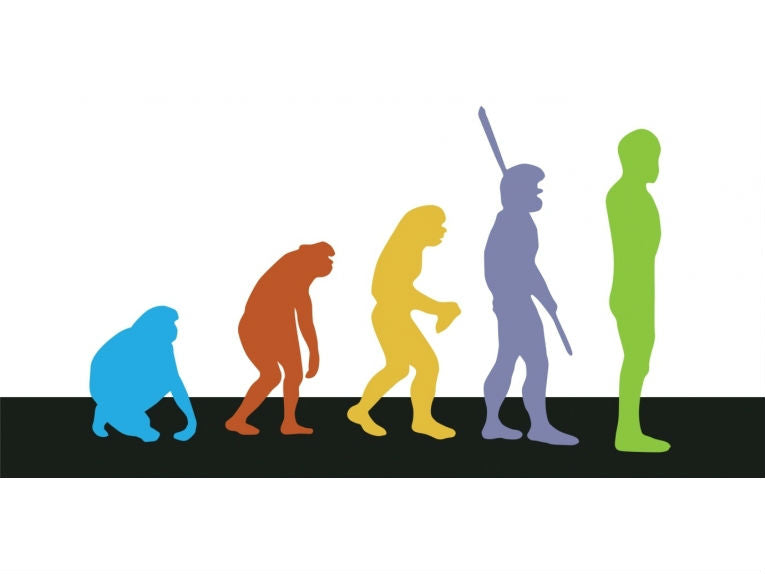Above: The cartoon indicates an ape ancestor of chimpanzee and human species at 6 million years ago. Lucy is the famed Ethiopian australopithecine while H.erectus is the yellow individual. The two known modern species are modern man and neanderthal man.
Human origins fascinate some people more than our currently-evolved selves. We have, in Africa, the mother of our species and civilisation. Unfortunately, we were fed a false theory in the beginning and now play catch up with the fossils that give us clues about our adaptive ancestors. Homo erectus is every schoolchild's joke. It stood up and started being human is the theory.
Unfortunately, it is now going to be regarded as a "they stood up" theory. A whole family of humans, all of different species, are now proposed to explain the limited number but great variety of fossils. Meave Leakey of that famous family writes a paper this week in Nature News and Comments.
Professor Tim White of University of California, Berkeley, disagrees and points out that intra-specific variety in many species is large enough to account for the skull specimens we possess. It's a hard nut to crack when all the evidence is a tiny collection of teeth and facial and jaw bones recently dug from the Koobi Fora desert in northern Kenya.

Credit: F. Spoor
Above: An upper skull found in 1972 and a newly discovered lower jaw are both thought possibly to have belonged to the enigmatic hominin species, Homo rudolfensis.
To recap the evidence, we have a skull of this Homo rudolfensis species from 1972, followed up by several more, including this recent find. The face and lower jaw are missing, leading to the difficulties these scientists describe in deciding a species. The flat face of the 1972 skull could be that of Homo habilis or Homo erectus, but the Leakey theory of many "hominins" speciating at that time insists that before 1.7mya (and after 2.0mya) the bones we now have indicate totally different "co-habiting" species. By 1mya, most researchers believe there was a single human line of "hominid." This would have lead to our most modern species (sapiens and neanderthalensis).
The two new lower jaws and a juvenile lower face have rectangular dental arcade structure. This separates them quite distinctly from more modern hominids. The face has cheeks which stretch forward to join the palate, just like the more mature specimen. Meave Leakey remembers lifting the fossil with, "It was such an extended excitement as the juvenile face slowly emerged from the encasing rock, and its similarity to the 1972 specimen became so striking."
Professor White's ideas are supported too, however. There is another lower jaw from similar hominins which has a more rounded dental arcade than the new finds.
Labelled H rudolfensis, it has to be reclassified as H. habilis or a new species according to Meave Leakey. The 300,000 years when hominins inhabited this piece of Africa are a puzzle, there is no doubt. They would certainly have been there at almost the same time, which again helps Professor White's viewpoint to succeed. Would so many similar species evolve if their niches were in the same habitat? The old palaeontologists used to have unforgiving arguments which restricted scientific advances. Let's hope this is not simply another example of self - justification!










